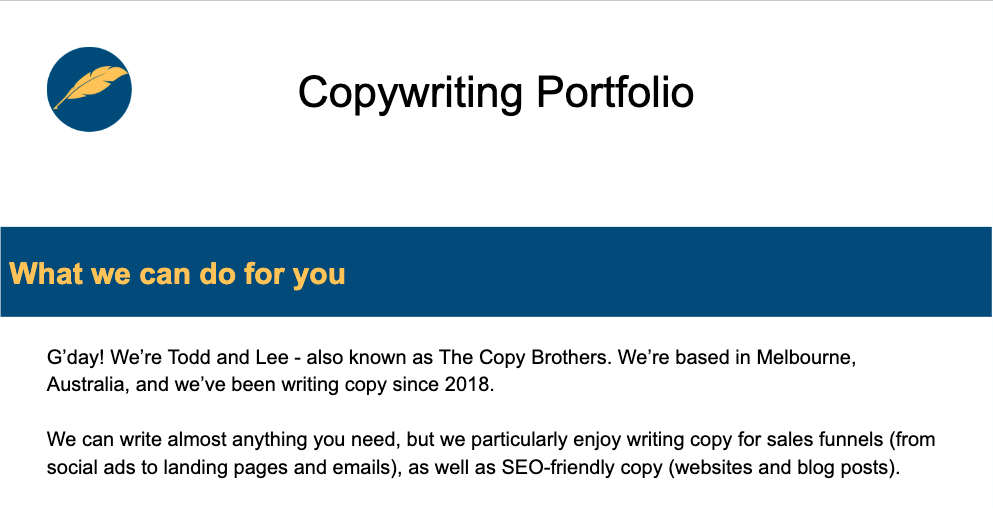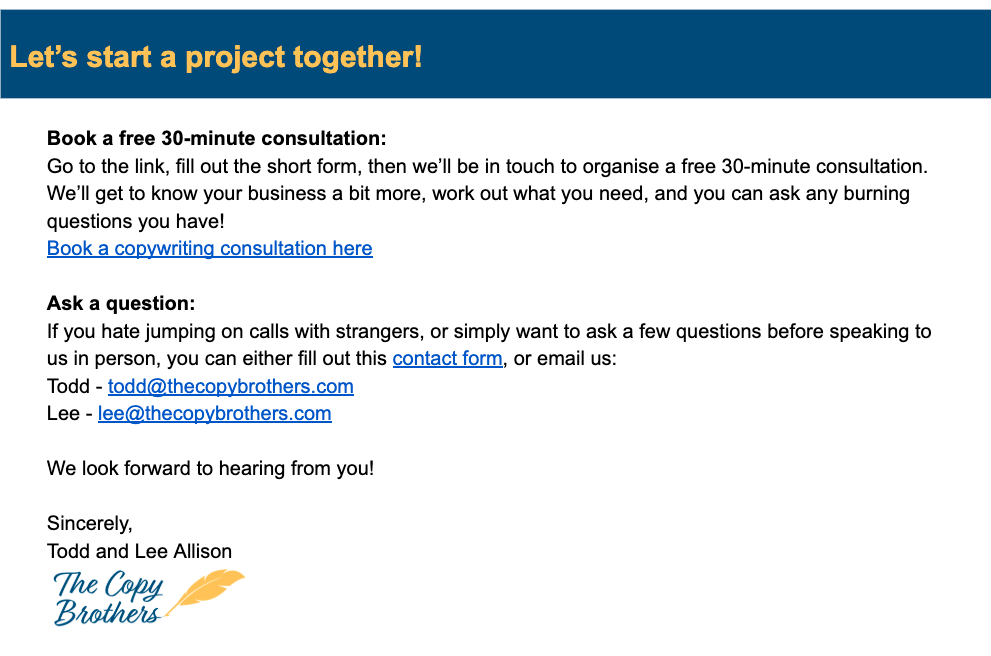A portfolio is one of those things every copywriter knows they should have… but many don’t. Whether you’re brand new without samples or experienced but never pulled your work together, the result of not having a portfolio is the same: missed opportunities. Clients can’t hire what they can’t see.
The good news? Building a portfolio doesn’t have to be overwhelming or even time-consuming. In fact, with the right approach, you can put together something simple — and effective — in less time than it takes to binge an episode of your favourite show. This guide will walk you through exactly what to include, how to format it, and how to get it live fast, whether you’re brand new or just finally getting around to it.
Why Your Copywriting Portfolio Doesn’t Need to Be Fancy
You’ve probably seen other copywriters with impossibly smooth personal websites that make you wonder if they took a UX course. But the truth is, you don’t need a fancy portfolio to get clients.
Clients are busy. They’re here for your work, not your animated loading screen.
A simple portfolio made in Google Docs can be more than enough to get you booked. In fact, Google Docs have a few secret advantages:
- Easy to update
- Easy to share
- Loads instantly
- Can be formatted nicely with headers, links, and even visuals
- Doesn’t cost a cent
Whether you’re building your first portfolio or refreshing one that’s been gathering digital dust (maybe even a little real dust), here’s what you actually need to include and how to pull it together fast.
Essential Elements to Include in Your Copywriting Portfolio
Every copywriting portfolio worth its salt has the same core ingredients:
- A quick snapshot or about me section
- A few strong writing samples
- A sprinkle of credibility (testimonials, logos, or proof)
- An easy way to contact you
Get those right, and you’re already ahead of most beginners.
1. The About Me Section
First up, the about me section. Think of this as your copywriter’s elevator pitch, minus the lift and the awkward “so… crazy weather, huh?”
Start with a short paragraph that answers three key questions:
- Who are you?
- What kind of copy do you write?
- Why should someone care?
Keep it casual and human. If you’ve got a niche — like SEO content, e-commerce email flows, or direct-response landing pages that actually convert — now’s the time to mention it.
Pro tip: Does writing about yourself make you cringe? Pretend it’s someone else’s Tinder bio. Someone cool. Someone you’d swipe right on and hire.

2. Copywriting Samples
Here’s where it gets good. The meat and potatoes. The main event. The bit that makes them stop laughing and think, “Oh wait, they actually know what they’re doing.”
Here’s what you can include:
- Live links to work that’s out in the wild (websites, emails, ads, etc.)
- Screenshots for anything that’s no longer live
- Spec work if you’re new or short on client projects
- A short description under each one to give context: what it is, who it was for, what problem it solved, or what kind of results it got. If you have data, show it off!
You don’t need a portfolio the size of War and Peace. Five solid examples are more than enough to show what you’re capable of.
Pro tip: Not sure what to include? Pick pieces that match the kind of work you want to be hired for. If you want to write email copy, include emails in your portfolio!
3. Testimonials and Proof
It doesn’t matter if your clients were big names or just big personalities. If you’re proud of the work, add a logo or list them here. A simple mention shows you’re trusted by real businesses.
Better still, include a few testimonials. Just like you’d check Rotten Tomatoes before picking a movie or scroll through Google reviews before trying that slightly dodgy-looking fisherman’s basket, a quick quote from a happy client builds instant trust.
Pro tip: Don’t have testimonials yet? Just ask. Most clients are more than happy to say something nice (especially if you made them look good). And if you don’t have clients yet, you can offer your services for free in exchange for a testimonial — or try a small, low-paying job on a platform like Upwork where competition isn’t fierce. Those little projects may not pay much, but they can give you credibility fast.
4. Contact Info
This sounds obvious, but you’d be surprised how many copywriting portfolios forget this. Put your name, email, LinkedIn, or website (if you have one) clearly at the top or bottom of your portfolio. If you offer a free consultation upfront, say so.
Don’t make clients dig for this sort of information. No tiny fonts, no buried links. If someone has to hunt for your contact details, they’ll give up and hire someone else.

5. Bonus Sections to Make Your Copywriting Portfolio Stand Out
Once you’ve nailed the basics, you can always add a little extra sauce. Try:
- A short “services” section outlining specifically what you offer
- A results section that highlights wins you’ve helped clients achieve
- An outline of your process or what clients can expect when working with you
- A cheeky quote or line that sums you up (copywriters gotta copywrite)
Pro tip: Don’t overthink the extra details. If in doubt: launch first, polish later.
Final Thoughts: The Only Copywriting Portfolio Rule That Matters
Your portfolio doesn’t need to be perfect. It just needs to exist. Start with a Google Doc, add your best work, and share it with people who matter. Then update it when you’ve got new things to add. That’s it.
You don’t need a fancy website. You don’t need 10 years of experience. You just need to start. Because your next client isn’t looking for perfect. They’re looking for you! And they can’t find you if you keep hiding behind the “I’m still working on my portfolio” excuse.
